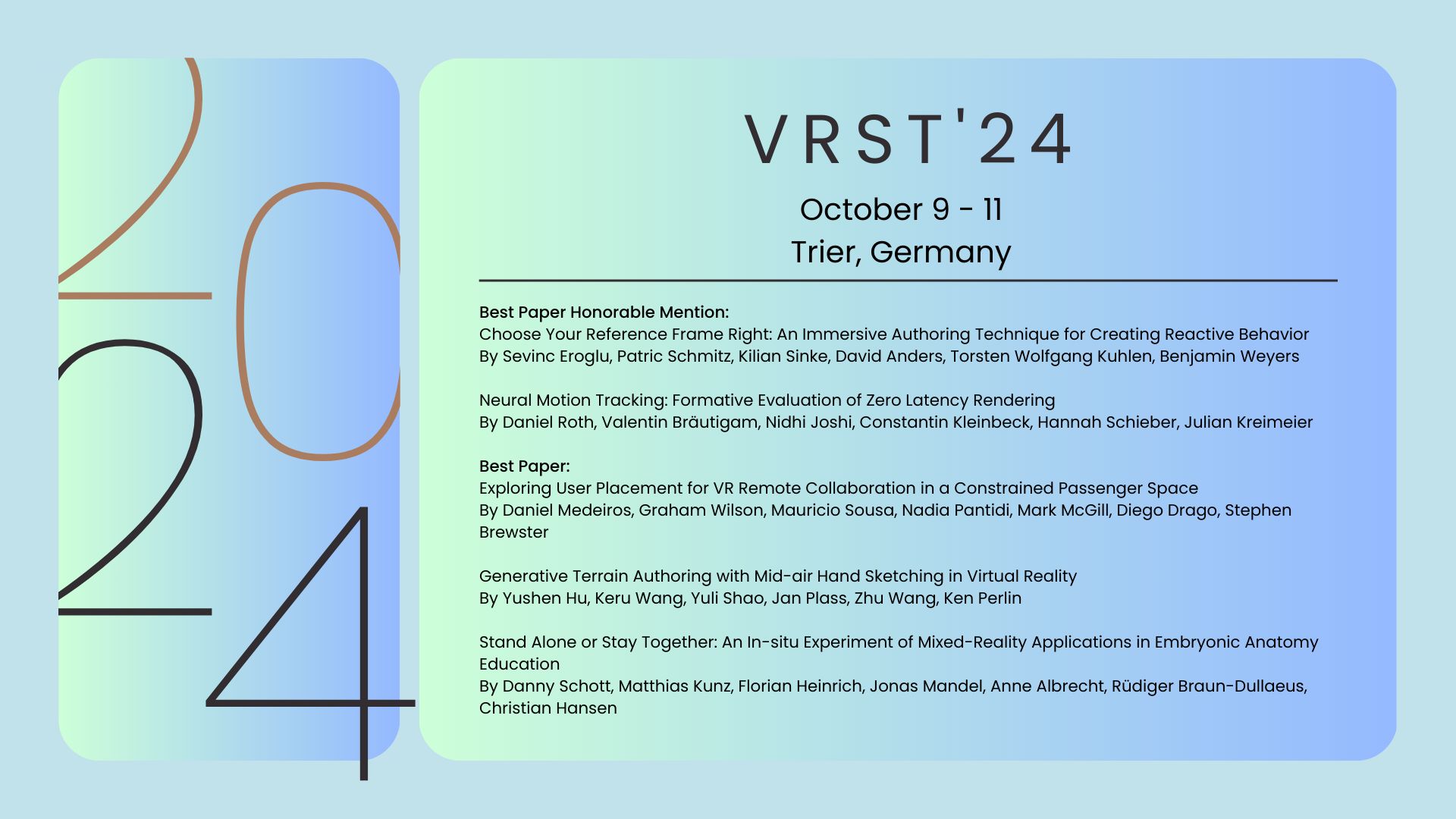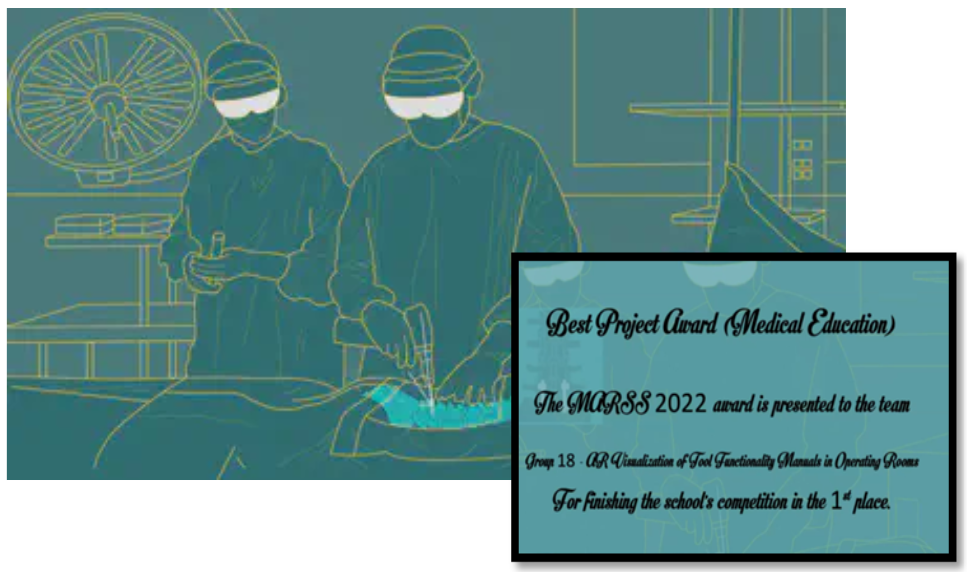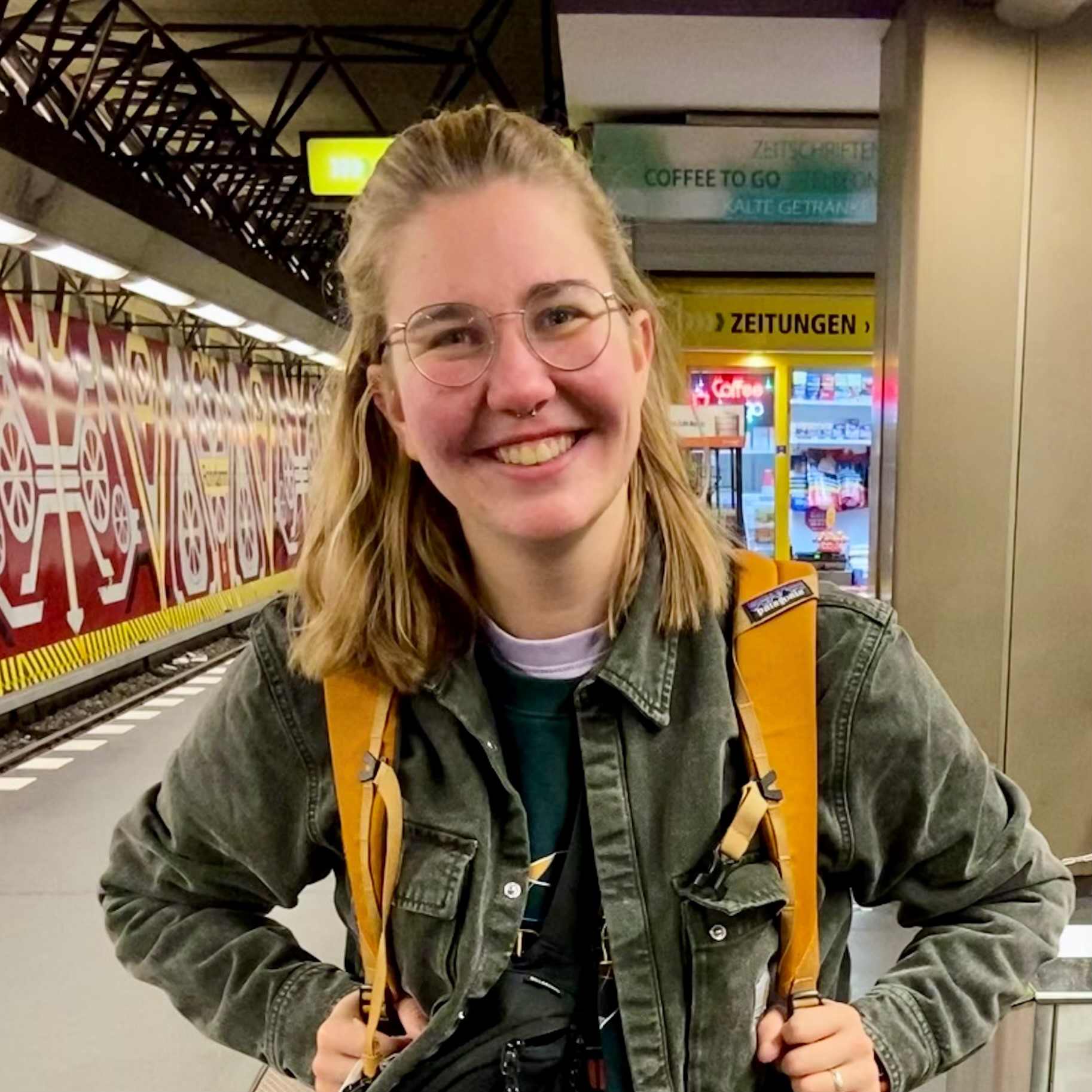Hannah Schieber, PhD Student
Bio
I am a PhD student under the supervision of Prof Daniel Roth at the Technical University Munich (TUM). I am currently researching the topic of neural 3D content creation and guidance in 3D using extend reality.Moreover, I guide as a tutor several courses like: Advanced Topics in 3D Computer Vision or Modern Computer Vision Methods
In winter term 2024/2025, I hold the seminar Computer Vision in the Operating Room @ TUM.
Visiting Research
In the first half of 2024, I was a visiting PhD student at the University of Otago, New Zealand. There I researched the creation of outdoor 3D scenes for Virtual Reality using Neural Rendering in the Visual Computing Group under the supervision of Prof. Stefanie Zollmann. The results from this research visit can be found here: Project Page
Education
Prior my PhD position, I received my bachelor’s degree from HS Aalen, and my master’s degree from TH Ingolstadt, both in computer science. I did my master's degree in the AUDI DUAL master program. During my bachelor studies, I gained experience in the industry at MAPAL Dr. Kress KG, c-Com GmbH and Carl Zeiss AG.I am interested in computer vision, extended reality and in general in many things in life. Besides being passionate about my PhD studies I like to go cycling and bouldering.
Interested in a research coperation? Feel free to contact me any time via e-mail:
Contact:
hannah dot schieber @ tum dot de /
Google Scholar
/
bsky.social /
Twitter /
Github
News
- [01/2025] Two papers accepted at IEEE VR (one first author, one co-author)
- [01/2025] Our IEEE RA-L paper will be presented at ICRA 2025
- [11/2024] One paper (shared first author) at IEEE RA-L
- [10/2024] One paper (first author) at CVIU
- [08/2024] One paper (first author) and one poster (second author) accepted at ISMAR 2024
- [04/2024] One paper accepted as Highlight at CVPR 2024 (shared first author)
Information
I was reviewer at
- IEEE VR, IEEE ISMAR, IEEE AIxVR
- ACM VRST
- IEEE IROS
- BMVC
- WICV'23 workshop at ICCV
For journals I was a reviewer at Springer IJCARS, Springer Nature Virtual Reality, Springer Nature The Visual Computer, IEEE RA-L, and IEEE JBHI.
Teaching
Seminars
- [2024-2025] Computer Vision in the Operating Room @ TUM
- [2024] Praktikum in 3D Computer Vision @ CAMP TUM
- [2023, 2024] Advanced Topics in 3D Computer Vision @ CAMP TUM
- [2022-2023] and [2023-2024] Modern Computer Vision Methods @ CAM TUM
Tutor
- [2023-2024] Augmented and Virtual Reality @ FAU HexLab
- [2023-2024] Exergames @ FAU HexLab
Supervision
- [2025] TBA @ TUM
- [2024-2025] Supervision of three bachelor students @ TUM
- [2023-2024] Supervision of one master project and one master thesis student @ FAU
- [2022-2023] Supervision of two bachelor thesis students and one master thesis student @ FAU
Funding
Stipends
- [07/2024-01/2025] d.hip stipend
- [02/2024-06/2024] DAAD stipend for computer scientists (New Zealand)
- [09/2021-01/2024] d.hip stipend
Awards
Best Paper Honorable Mention

Best Project MARSS 2021

Drawings
Title Page Drawing for Journals Physiology Volume 133 Issue 2
Copyright @ Hannah Schieber | This is my personal webpage.

